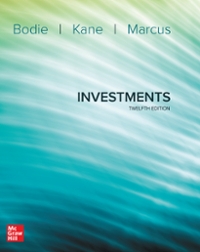Hi, I have one case study to solve, can you help me? The Q 2, 3, 4 are bothering me, please have a look. They are in the file. Thanks.
Case study 1: The European Airline Industry The Association of European Airlines (AEA) is an association of 34 established European airlines, mostly national flag carriers such as Air France, Lufthansa, Finnair, and SAS, but also some cargo specialists such as TNT and Cargolux. The AEA continuously surveys its members and publishes reports and statistics about its members' passenger and cargo traffic and capacity, and operating performance. Although the members of the AEA do not represent the whole European airline industry, the AEA statistics are a useful source of information about the state of the industry. Table on Page 2 is a selection of statistics illustrating the developments in the industry during the years 2002-2007. Revenue passenger kilometres (RPK) is the number of passengers transported times the average number of kilometres flown. Cargo tonne kilometres (CTK) is the amount of cargo transported (in tonne) times the number of kilometres flown. Load factors are defined as the ratio of realized RPKs (or CTKs) and available seat kilometres (tonne kilometres). Note that the description of the European airline industry in this chapter covered the period 1995-2004. Use the above information to answer the following questions about whether and how competition in the European airline industry has changed after 2004: 1. Evaluate how the rivalry among existing firms has developed after 2004. (no more than 400 words) 2. Evaluate the influence of rising fuel prices on the AEA airlines' profitability between 2003 and 2006. If fuel prices had not increased after 2003, what would have been the pre-interest breakeven load factor in 2006 (assuming all other factors constant)? (no more than 200 words) 3. During the period examined, some airlines started to charge fuel surcharges to their customers. For example, late 2007 KLM charged its customers 27 on European flights and 80 on intercontinental flights. Other airlines had similar surcharges. How do such practices affect your answer to question 2? (no more than 200 words) 4. The operating margins of the AEA airlines became positive, on average, in 2004 and gradually improved thereafter. What do you think are the most important drivers behind this development? (Also consider your answers to questions 2 and 3.) (no more than 200 words) Tip: the pre-interest breakeven load factor is defined as cost per kilometre / revenue per kilometre. 1 2







